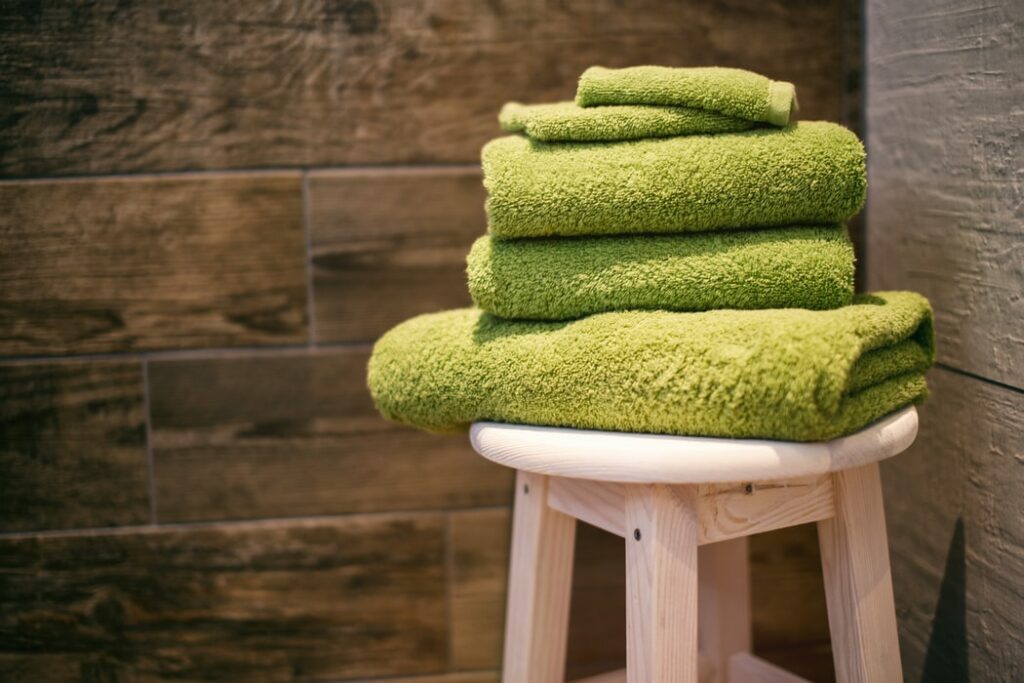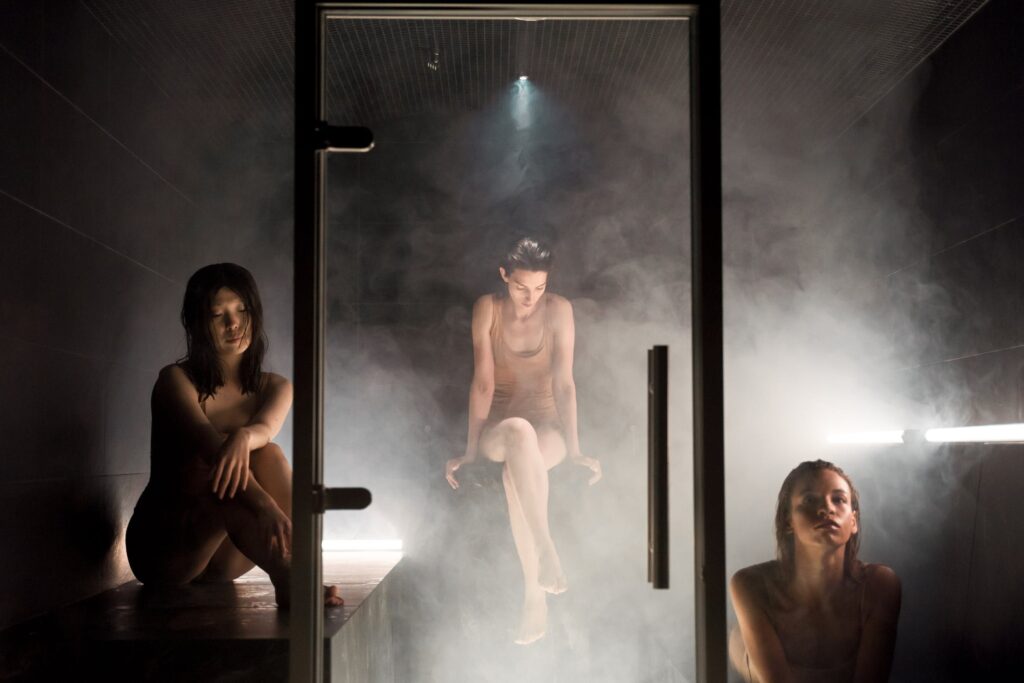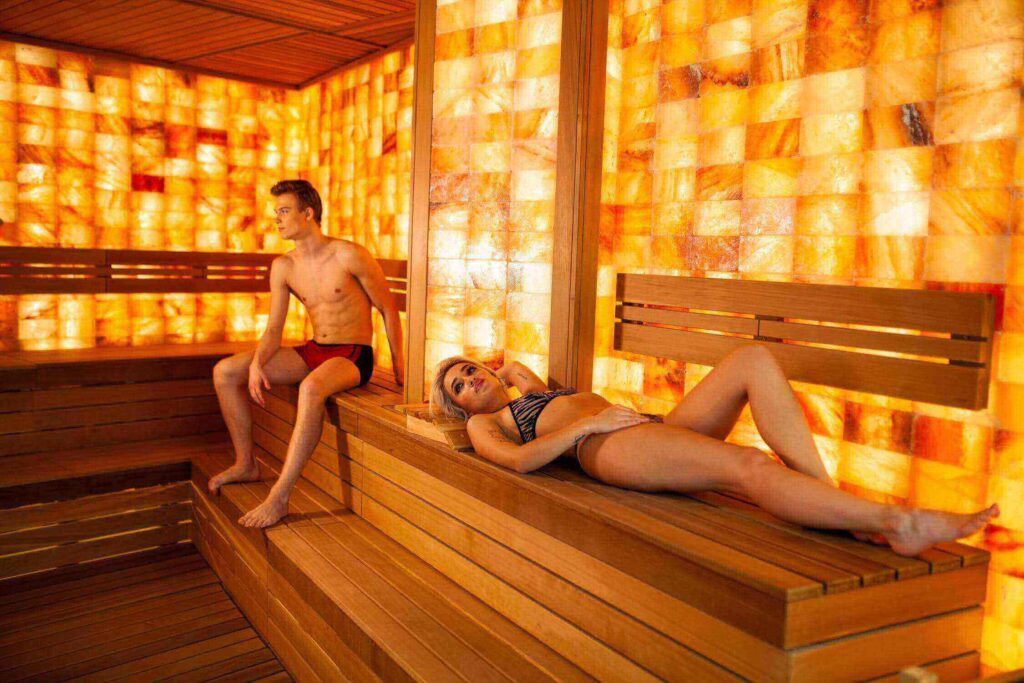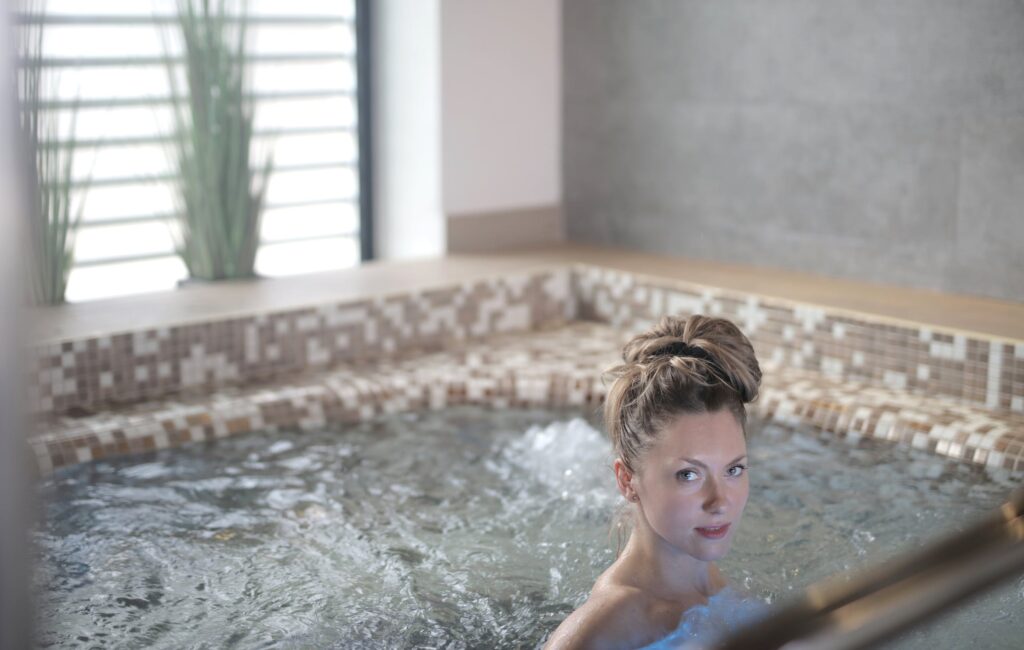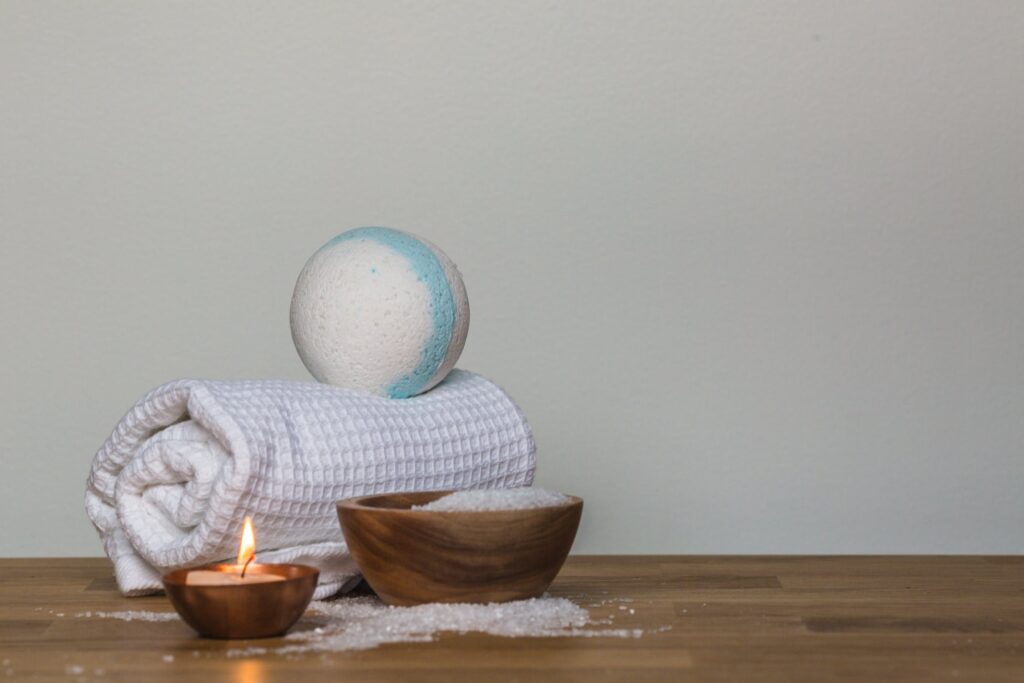November will serve as a reminder to take good care of our largest organ as the American Academy of Dermatology has designated the month as Healthy Skin Month. Your adult birthday suit is roughly eight pounds and 22 square feet in size. According to research, frequent 20-minute sauna sessions can keep your skin looking great.
Since the Finnish dug houses into mountain slopes or constructed log cabins to use as saunas, they have been used for leisure and regeneration for generations. Although their appearance has changed, saunas are still a staple of many people's modern beauty regimes because of the great advantages they provide for their skin.
Do saunas benefit skin health? What is it about them that gives you such a revitalizing feeling? Dr. Erin Gilbert, MD, Ph.D., a board-certified dermatologist, was the subject of our conversation to learn more about the connection between saunas and skin.
You want to find a cure as soon as possible if your skin becomes irritated or breaks out into acne. With little success, you may have tried a variety of facial cleansers, lotions, or even over-the-counter medicines. The majority of these products make an effort to clear your skin's pores. Your body achieves this naturally by perspiring, and using a sauna is a terrific method to perspire heavily!
Have you considered using an infrared sauna to help with your skincare regimen? Clearer pores and better acne are just two of the many health advantages of saunas. You can prevent acne and pimple breakouts in the future in addition to treating current acne naturally. Spend some time in your personal sauna to learn how you can naturally achieve better-looking skin.
FAQs About Sauna
Cooling off after the sauna is important because you can catch a cold if you sweat too much. Sauna-goers should leave enough time to cool down before warming up again. If you can, don't have a shower straight after the sauna. It's better for the body if you cool off in the fresh air first.
Improves Natural Glow. Often, our skin can look old and dull because of the buildup of dead skin cells. A sauna can help remove old, dead skin and give you a brighter, more youthful complexion.
Whilst in the sauna, it's possible for you to achieve a passive cardiovascular workout. In effect, this is exercising by doing nothing. It doesn't take long either. You should feel the effects of a passive cardiovascular workout after 5 minutes of being in the sauna.
Can You Lose Weight in a Sauna or Steam Room? Yes. But you're not building muscle, you aren't burning a significantly raised rate of calories, and you're really only losing water weight. In addition, not replacing the water you are sweating out can actually make it harder for your body to lose weight.
What are the benefits to the skin from going into a sauna?
The improved circulation that heat brings is one advantage. Our skin and body's cells receive oxygen and nutrients through the blood, which is extremely necessary for maintaining the metabolism of the cells and enabling effective repair processes. Age causes all of this to slow down, so I strongly support increasing the skin's blood circulation.
Why it's good to sweat
A sauna session might cause you to shed up to a pint of sweat, according to Harvard Health Publications. Your skin will be refreshed as a result of the pollutants being washed from your body through sweat. To get the most out of this benefit and maintain your health, make sure to drink enough water before and after using a sauna.
Additionally helping to control body temperature, sweat may also aid in the prevention of infections. Your levels of dermcidin, a protein that fights harmful bacteria, may rise as a result of excessive sweating in a sauna.
You must recognize the healing effects of sweating in order to fully appreciate the advantages of saunas. From the standpoint of fitness, consider this: Your heart rate, blood flow, and circulation increase when you exercise. Additionally, your pores enlarge. The poisons that were hidden in the same pores are also removed by perspiration. Less toxin buildup results in fewer clogged pores, which promotes smoother skin.
Similar results can be obtained by substituting high temperatures for strong activity. Because we consulted a dermatologist, we know. According to Marina Peredo, M.D. of Skinfluence NYC, "the heat from the sauna promotes blood flow, which in turn leads to a reduction in blood pressure." "The heart beats more quickly and effectively. Similar to exercise, the enhanced circulation results in greater delivery of nutrients to the skin."
Keeps the skin young
Like any other organ, your skin has a system that it relies on to function. Organ systems can work more efficiently because of the efficiency that a sauna provides throughout the body. Regular sauna use keeps you young by promoting healthy skin that breathes and operates. Maintaining the same level of skin function as when you were younger is essential if you're concerned about looking younger.
The result is a complexion that is smoother and younger-looking after the oils, dirt, and debris clogging your pores have been removed. However, this doesn't happen right away; rather, it happens over the course of several sessions spread out over several weeks. The difference then becomes much more obvious a few months later.
It's anti-wrinkle
The skin is completely surrounded by heat and more moisture, which can assist to lessen the wrinkle appearance. Saunas have been dubbed anti-wrinkle because they can slow the onset of wrinkles and help them appear smoother and more even.
Saunas are like exercise for your pores.
The benefit of saunas, according to Dr. Gilbert, is that they cause your pores to open up and dilate. She explains that pores are made to aid with temperature regulation. Saying, "Hey folks, it's terribly hot in here, I need to get cooler," is what people do in saunas. Your body cools itself in part by opening your pores and perspiring. Therefore, using a sauna is similar to "exercising your pores."
According to Medical News Today, a different study conducted in Germany discovered that frequent usage of saunas "leads to a more stable epithelial barrier function, an improvement in stratum corneum moisture as well as a rapid recovery of both high water loss and skin pH." Lower layers of the skin are shielded by the stratum corneum, and injury at this level can change the pH of the skin's surface, opening the door to infections or other problems.
Infrared saunas, in particular, moisturize the skin from the inside out. It's a completely natural, chemical-free method of giving your skin the maximum amount of moisture. A sauna's moisture can significantly slow the aging process. Suddenly, warmth and moisture are absorbed into what would typically appear to be dry skin.
After your session, wash and hydrate your face and body for the greatest benefits. If you have delicate skin or certain skin disorders, avoid the sauna because its heat might dry up your skin. As always, if you have any questions regarding the advantages of a sauna for you, consult your doctor.
With all these advantages for your skin, using a sauna can improve both your appearance and your mood.
Spending time in a sauna can help increase circulation.
Spending time in a sauna will increase your skin's circulation, which, according to Dr. Gilbert, "will actually make your skin seem healthier and nicer." She explains that because of the improved circulation, your skin is receiving more nutrients and will glow with a rosier, healthier appearance.
Improved blood and lymphatic circulation is another strategy to aid in the reduction of your acne. In the sauna, sweating causes your skin to absorb more nutrients and oxygen. As a result, skin cell renewal benefits you by giving you healthier-looking skin. This method also helps to naturally moisturize your body and face without the use of harmful or clog-causing chemicals.
Saunas may not be ideal for sensitive skin types
Those with delicate skin may experience discomfort after using a sauna. This is due to Dr. Gilbert's observation that sensitive skin is associated with sweat that contains a higher concentration of salt, which can irritate the skin. Saunas may cause rosacea sufferers considerable concern. According to Dr. Gilbert, people with rosacea may not be able to recover from flushing as quickly because saunas might "promote and permanently modify the number of red blood cells on your face." Saunas may also aggravate skin diseases like eczema and psoriasis, so it's recommended to consult your dermatologist if you have either of these before trying one out.
Tips for Better Skin Through a Sauna
Before attending a sauna, prepare any regions of your skin that require attention:
- Use a suitable facial cleanser.
- Take in a lot of water.
- Be sure to use light abrasion to open up your pores.
- Be certain that you are perspiring actively.
- After your sauna break, immediately take a cold shower.
- To moisturize your skin, think about using a hypoallergenic lotion.
Make preparations before going to the sauna for your skin treatment to make the most of your time there. Prepare your skin first, paying special attention to any breakouts of acne there.
Use a facial cleanser designed specifically for your skin type if you have acne on your face. Additionally, ensure sure the cleanser is mild enough to prevent further skin irritation brought on by the sauna's heat.
The objective is to clean the skin of any sweat, oil, or makeup. By preventing further pore blockage while in the sauna, this aids in the cleansing process. Additionally, you should consume a lot of filtered water. For the best benefits, bring a water bottle with you to the sauna and sip it as you sit.
The water will assist in your body's natural detoxification process by filtering out contaminants. This will aid in avoiding subsequent hormonal, chemical, and other toxin-related acne outbreaks. When these toxins are expelled via your pores while you sweat, it can lead to flare-ups.
After leaving the sauna, start winding up your regimen by having a cold shower. You treat your pores in addition to washing your body from the sweat, sebum, and toxins created during the session. The pores contract and close as a result of the chilly temperature, preventing acne.
Finally, moisturize using a hypoallergenic lotion that won't clog your pores after taking a cold water shower. Think about using an all-natural lotion that is unscented, undyed, and free of pollutants and chemicals. This can help your skin continue to benefit from sauna sessions.
The Perfect Sauna Routine
Whether you're going to the sauna to unwind after a workout or to recover from a wild night at the après-ski the night before, you should wash your face beforehand. Any sweat buildup from an exercise, particularly if it has begun to dry, as well as any grime and cream that have built throughout the day, should be removed. You want a fresh canvas because you'll be sweating a lot in the sauna and you don't want any pores to clog.
Keep in mind that your body is severely dehydrated. Water is essential to consume before, during, and after using a sauna. This is crucial.
Never spend more than ten minutes in the sauna at once. Your body's metabolic processes and circulation are diminished by the heat. Alternatively, take a chilly dip in the pool or a roll in the snow, if you can. If you're at the gym, take a short, warm shower to get the perspiration off your face first.
According to Peredo, "Sweating releases a considerable quantity of salt, which needs to be wiped away right away after sweating." "Salt, sebum, and bacteria work together to cause breakouts."
The buildup on the scalp is another issue that Peredo warns about: "What occurs to the skin happens to the scalp, creating inflammation and discomfort around the hair follicles." Therefore, whether or not you used shampoo, make sure to properly rinse your hair and use your fingers to scrape away any dirt.
Reduce the water's temperature as soon as you finish cleansing; doing so will allow your body's critical organs to receive blood again and will also aid in the pores' ability to return to their resting size. You do not even want them to stay open or close until you've removed all of the salt and perspiration that comes out when you perspire.
After taking a chilly shower, many individuals will return to the sauna. As long as you immediately after, take another cold-water immersion, you should only take one further sauna session.
The heated temperature can have long-lasting drying effects on your skin, so now is the time to rehydrate. After your last rinse, dry off.
Sauna for Acne and Pores
Acne is exacerbated by clogged pores and obstructed glands. Thankfully, a sauna session can help you solve both these aesthetic and health issues. These disorders can cause boils, whiteheads, blackheads, and pimples. The skin's sebaceous glands are responsible for this. These glands are helpful for producing sebum and surrounding hair follicles.
Sebum is a wax-like natural moisturizer that occurs in the body and is healthful. Sebum is essential for maintaining moisture in your skin and also gives the cells in your skin the necessary nutrients. These vitamins and minerals aid in the youthful, dewy appearance of your face.
Taking a shower can help you remove oil and debris from your body. However, according to Dr. Andrew Weil's website, a sauna induces intense perspiration that clears the pores and glands. Saunas can also get rid of pollutants and diseases. According to the website Saunafin, the skin is the biggest organ in the body and excretes 30% of bodily toxins. Your body will cleanse by opening skin pores and eliminating toxins from within when a sauna causes excessive sweating. Unpleasant skin issues including acne, pimples, and blackheads are less common problems when toxins and wastes are removed.
Acne results from dead skin cells, germs, debris, or wax-based sebum becoming trapped in your pores or glands. A great technique to remove these pollutants is to visit a sauna and sweat through your pores. You gain less acne as a result, without having to use pricy creams, unpleasant cosmetic procedures, or prescription drugs.
Be sure to take a shower after visiting a sauna.
It might be because the salt is still on your skin if you get a negative skin reaction after using a sauna, even if it's a few hours later. Washing your face or taking a shower will help ease this soreness. If you have the nerve to try it, taking a cold shower right after the sauna will induce a kind of circulatory shock that can be quite reviving for both your body and your skin. No matter the water's temperature, Dr. Gilbert suggests "you should shower after the sauna to prevent any discomfort and also for the sake of others around you in any enclosed places."
Reduces inflammation
Chronic diseases can develop as a result of bodily inflammation. Inflammation frequently manifests as swelling, heat, and redness on the skin, despite the fact that normally we do not identify inflammation with the skin. A sauna significantly lowers inflammation, giving your skin the chance to exist free from unfavorable inflammatory impact.
Sauna for Collagen Production
As we become older, treating aging symptoms becomes our primary focus instead of treating acne. The decrease in skin elasticity is one of the most obvious indications of aging. Collagen, which our bodies naturally make, is what gives us our plumpness. Our bodies, however, slow down this production as we become older.
Because it gives our organs and tissue, especially our skin, flexibility and strength, collagen is extremely helpful. Sweating while in the sauna stimulates the body to produce more collagen. Due to the infrared sauna's heat, you can also gain from the clearance of dead skin cells.
Without dead skin cells to obscure, dull, and conceal newly forming skin that is striving to reach the surface, skin appears younger. Cells constantly renew themselves. What is old must be swept away in order to see what is new. This is what a sauna provides, and the result is a glowing complexion.
Choose Saunas for Skin
It's time to locate your next individual sauna now that you are aware of the health advantages of a sauna for the skin. We provide European-caliber saunas for master baths and home gyms to improve your at-home self-care experience. To build the best sauna for your area, our design staff will collaborate with you.
How can a sauna be bad for the skin?
The temperatures in a sauna are significantly higher than those in a steam room. Because of this, saunas, despite the fact that they can improve blood circulation and offer the other benefits described previously, are not recommended for those who have a significant amount of redness in their skin. It is essential to keep in mind that because heat rises, the temperature will be more bearable for people with any kind of skin if they sit on one of the lower benches as opposed to the top bench. When I was younger and frequented saunas, I vividly recall being exposed to this. My sisters and I would whine about how hot it was getting and how difficult it was to breathe, and my grandma would always instruct us to "Move to the bottom bench!" Additionally, the temperature was noticeably cooler down there.
In addition, saunas provide drier heat than other forms of heating since the temperatures range from 170 to 212 degrees, creating an environment with a humidity level that is anywhere from 5 to 20%. Although they will hydrate the skin to some degree, the benefits that they offer for hydration are not nearly as significant as those that a steam room offers. In the same manner that a moisturizer should be applied to the skin immediately after using a steam room, you should always apply a moisturizer to the skin shortly afterward in order to preserve the moisture in the skin and prevent it from evaporating when the air is dry.
Last but not least, for those who are predisposed to developing melasma (dark brown patches on the skin caused by hormones), the heat may also increase the possibility of making the discoloration more prominent. This is due to the fact that heat causes inflammation of the skin, which raises the skin's internal temperature and wakes up melanin cells. It is never a good idea to unnecessarily create more stimulation of melanin with heat because the goal with any sort of pigmentation is to quiet overactive melanin cells with soothing anti-inflammatory substances like licorice and stable vitamin C as contained in Vitamin C&E Treatment. If you are someone who is prone to pigmentation and you are trying to get it to fade, one of the most important goals you should strive for is to keep the temperature of the skin as cool as possible. This would mean staying inside on extremely hot days, avoiding steam rooms and saunas, and not participating in hot yoga.
In conclusion, bathing in steam and sweating it out in a sauna are both good for you from a hydration point of view. If you want to achieve this result, however, there are several topical medications that can make the process of hydrating dry, parched skin cells simpler and more expedient.
The anti-aging benefits of a sauna include acting as a preventative measure, being able to treat already existing issues, helping to strengthen the skin as an organ, and giving you the opportunity to restore youth that has been lost or to hang onto a youth that has not yet been lost. Maintain, maintain, and maintain.
Conclusion
November is Healthy Skin Month, and the American Academy of Dermatology has designated the month as Healthy Skin Month. According to research, frequent 20-minute sauna sessions can keep your skin looking great. Dr. Erin Gilbert, MD, Ph.D., a board-certified dermatologist, was the subject of our conversation to learn more about the connection between saunas and skin. She highlighted the benefits to the skin from going into a sauna, such as improved circulation, clearer pores, and better acne. She also suggested using an infrared sauna to help with skincare regimen.
A sauna session can cause you to shed up to a pint of sweat, which can help to control body temperature and prevent infections. It can also help to reduce blood pressure and improve circulation, as well as keep the skin young by promoting healthy skin that breathes and operates. It is also anti-wrinkle, as it can slow the onset of wrinkles and help them appear smoother and more even. To get the most out of this benefit, make sure to drink enough water before and after using a sauna. Saunas are a natural, chemical-free method of moisturizing the skin from the inside out, which can slow the aging process and improve both your appearance and mood.
They also increase circulation, which can help reduce acne and improve skin cell renewal. After your session, wash and hydrate your face and body for the greatest benefits. If you have delicate skin or certain skin disorders, avoid the sauna because its heat might dry up your skin.
Saunas can be uncomfortable for delicate skin due to the higher concentration of salt, which can irritate the skin. To ensure better skin through a sauna, it is important to use a suitable facial cleanser, take in a lot of water, use light abrasion, perspire actively, moisturize with a hypoallergenic lotion, and use a facial cleanser designed specifically for your skin type. After the sauna break, take a cold shower to clean the skin of any sweat, oil, or makeup. This will aid in avoiding subsequent hormonal, chemical, and other toxin-related acne outbreaks. The Perfect Sauna Routine includes washing your face beforehand, moisturizing using a hypoallergenic lotion, never spending more than ten minutes in the sauna at once, taking a chilly dip in the pool or a roll in the snow, and reducing the water's temperature as soon as you finish cleansing.
This will allow the body's critical organs to receive blood again and aid in the pores' ability to return to their resting size. A sauna session can help solve both aesthetic and health issues caused by clogged pores and obstructed glands, such as boils, whiteheads, blackheads, and pimples. The skin's sebaceous glands are responsible for producing sebum and surrounding hair follicles, which is essential for maintaining moisture in the skin and giving the cells in your skin the necessary nutrients. Saunas can also get rid of pollutants and diseases, as the skin is the biggest organ in the body and excretes 30% of bodily toxins. Be sure to take a shower after visiting a sauna to prevent any discomfort and reduce inflammation.
Inflammation is a major cause of chronic diseases, and a sauna significantly lowers inflammation, allowing the skin to exist free from unfavorable inflammatory impact. It also stimulates collagen production and clears away dead skin cells, resulting in a glowing complexion. We provide European-caliber saunas for master baths and home gyms, and our design staff will collaborate with you to build the best sauna for your area. A sauna is not recommended for those with redness in their skin, but it is more bearable for those with any kind of skin if they sit on one of the lower benches. Additionally, saunas provide drier heat than other forms of heating, creating an environment with a humidity level of 5-20%.
To hydrate the skin, a moisturizer should be applied immediately after using a sauna. Heat can lead to melasma and other skin discoloration, so it is important to keep the temperature of the skin as cool as possible. To achieve this, bathing in steam and sweating it out in a sauna are both good for hydration. Additionally, topical medications can make the process of hydrating dry, parched skin cells simpler and more expedient. Finally, a sauna can act as a preventative measure, treat existing issues, strengthen the skin, and restore youth.
Content Summary
- November will serve as a reminder to take good care of our largest organ as the American Academy of Dermatology has designated the month as Healthy Skin Month.
- According to research, frequent 20-minute sauna sessions can keep your skin looking great.
- Do saunas benefit skin health?
- Dr. Erin Gilbert, MD, Ph.D., a board-certified dermatologist, was the subject of our conversation to learn more about the connection between saunas and skin.
- Clearer pores and better acne are just two of the many health advantages of saunas.
- Spend some time in your personal sauna to learn how you can naturally achieve better-looking skin.
- What are the benefits to the skin from going into a sauna?The improved circulation that heat brings is one advantage.
- To get the most out of this benefit and maintain your health, make sure to drink enough water before and after using a sauna.
- Regular sauna use keeps you young by promoting healthy skin that breathes and operates.
- The benefit of saunas, according to Dr. Gilbert, is that they cause your pores to open up and dilate.
- Therefore, using a sauna is similar to "exercising your pores.
- Infrared saunas, in particular, moisturize the skin from the inside out.
- After your session, wash and hydrate your face and body for the greatest benefits.
- With all these advantages for your skin, using a sauna can improve both your appearance and your mood.
- Spending time in a sauna can help increase circulation.
- Spending time in a sauna will increase your skin's circulation, which, according to Dr. Gilbert, "will actually make your skin seem healthier and nicer."
- Those with delicate skin may experience discomfort after using a sauna.
- Take in a lot of water.
- To moisturize your skin, think about using a hypoallergenic lotion.
- Make preparations before going to the sauna for your skin treatment to make the most of your time there.
- Prepare your skin first, paying special attention to any breakouts of acne there.
- Use a facial cleanser designed specifically for your skin type if you have acne on your face.
- Finally, moisturize using a hypoallergenic lotion that won't clog your pores after taking a cold water shower.
- If you're at the gym, take a short, warm shower to get the perspiration off your face first.
- Therefore, whether or not you used shampoo, make sure to properly rinse your hair and use your fingers to scrape away any dirt.
- Taking a shower can help you remove oil and debris from your body.
- Be sure to take a shower after visiting a sauna.
- A sauna significantly lowers inflammation, giving your skin the chance to exist free from unfavorable inflammatory impact.
- Sweating while in the sauna stimulates the body to produce more collagen.
- Due to the infrared sauna's heat, you can also gain from the clearance of dead skin cells.
- Choose Saunas for SkinIt's time to locate your next individual sauna now that you are aware of the health advantages of a sauna for the skin.
- How can a sauna be bad for the skin?
- The temperatures in a sauna are significantly higher than those in a steam room.
- In the same manner that a moisturizer should be applied to the skin immediately after using a steam room, you should always apply a moisturizer to the skin shortly afterward in order to preserve the moisture in the skin and prevent it from evaporating when the air is dry.
- This is due to the fact that heat causes inflammation of the skin, which raises the skin's internal temperature and wakes up melanin cells.
- If you are someone who is prone to pigmentation and you are trying to get it to fade, one of the most important goals you should strive for is to keep the temperature of the skin as cool as possible.
- In conclusion, bathing in steam and sweating it out in a sauna are both good for you from a hydration point of view.
- Maintain, maintain, and maintain.


